How do I raise a "pull request" to merge my [transform branch] back into the main trunk of DAP⇨flow's dap-airflow repository?

1. Log into your GitHub account
🖱 Open your web browser and log into your GitHub account using your Hackney email address with two-factor authentication.
👉 Users without a GitHub account or existing GitHub users without membership of the London Borough of Hackney organization, should start here ► DAP⇨flow📚GitHub access
2. Access the dap-airflow repository
🖱 When you are ready, open the dap-airflow repository in your web browser.
3. Switch to your working [transform branch]
👉 If you haven't yet created your [transform branch] then see here how to do that ► DAP⇨flow📚GitHub branching
🖱 Select the "Code" tab at the top of the repository page.
Fig. 3a 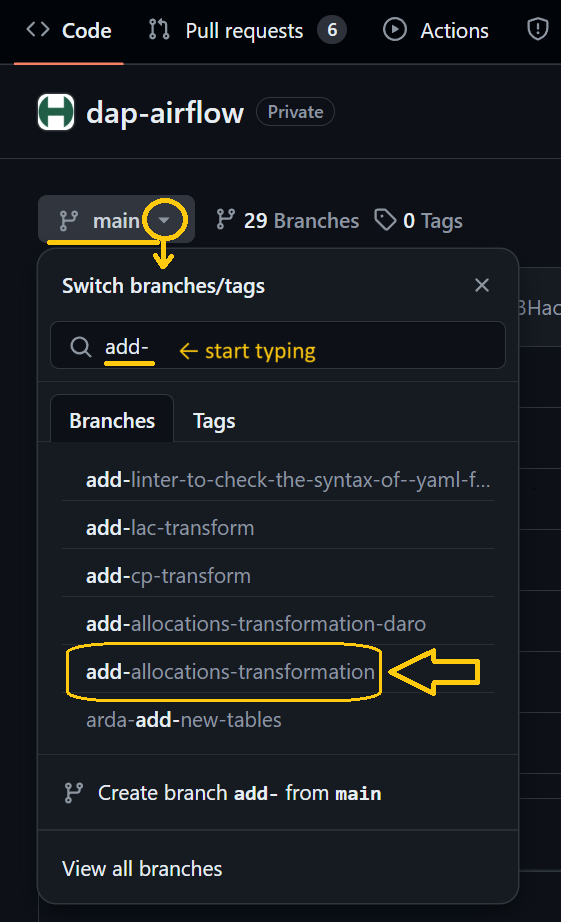
🖱 Click the ▼dropdown button next to main.
🖮 Start typing your [transform branch] name.
🖱 Find and select your [transform branch] from the menu below.
Fig. 3b 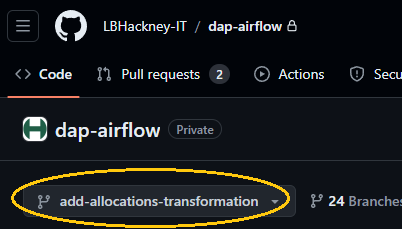
👁 Your [transform branch] should reappear next to the ▼dropdown button.
👉 If you've yet to commit your [transform SQL] to your [transform branch] then check back here ► DAP⇨flow📚Committing transforms
👉 If you don't remember if you committed your [transform SQL] to your [transform branch] then check here ► 📚Appendix
4. Create your pull request
🖱 Select the "Pull requests" tab at the top of the repository page.
Fig. 4a 
🖱 Click the "New pull request" button on the right.
🖱 Set the base: branch to the main trunk.
Fig. 4b 
🖱 Set the compare: branch to your [transform branch].
🖱 Click the "Create pull request" button.
Fig. 4c 
5. Add the details to your pull request
🖮 Enter a title for your pull request.
🖮 Add a description explaining the changes you have made.
Fig. 5 & 6 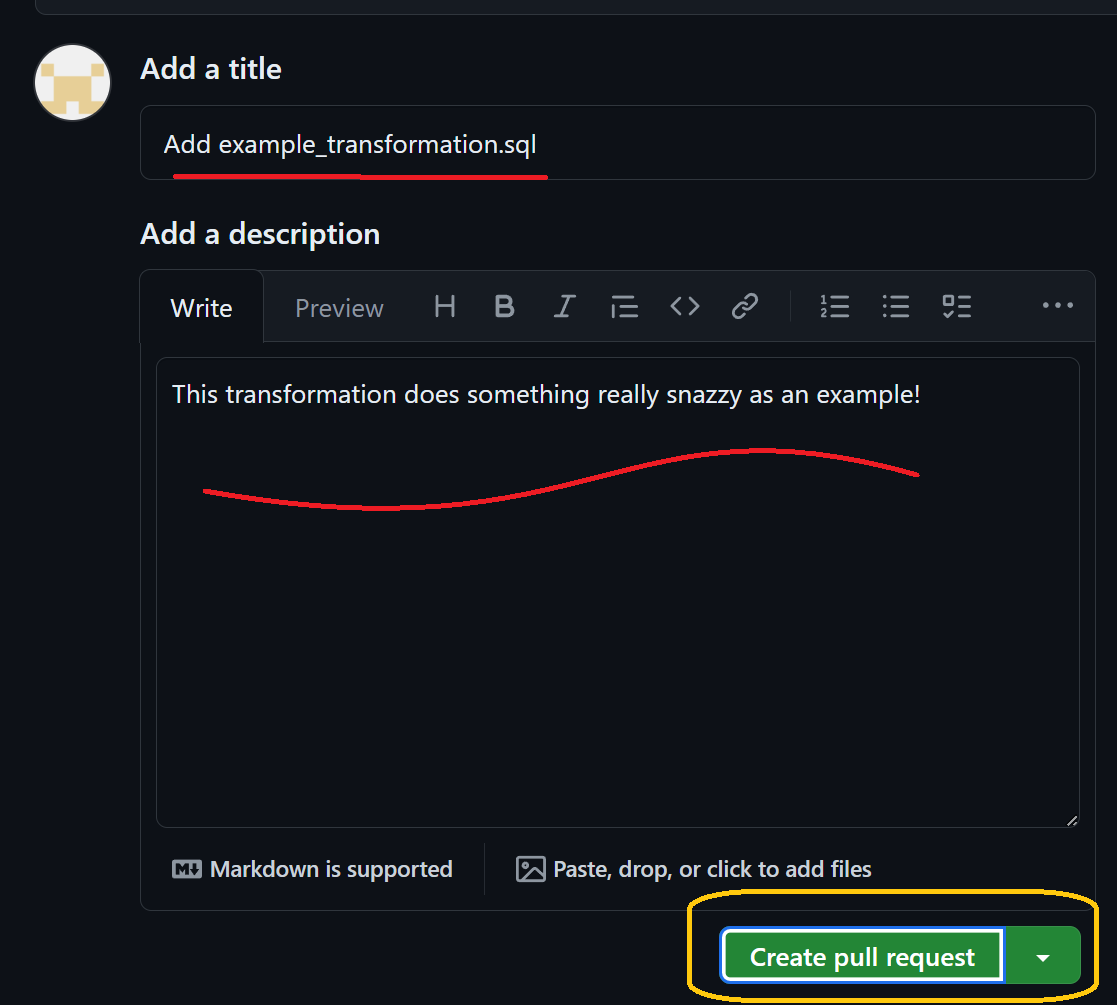
6. Submit your pull request
🖱 Click the "Create pull request" button below the description on the right.
GitHub should begin the process of pulling your [transform branch] into the main trunk or the dap-airflow repository:
✉ You will be sent an email to confirm that.
✉ A pull request email will be sent to the DAP Platform Team to notify them of your request.
"We ♡ your feedback!"

👉 Please use this link ► DAP⇨flow UX Feedback / github-pull-request
-
Your feedback enables us to improve DAP⇨flow and our Data Analytics Platform service.
-
We encourage all our users to be generous with their time, in giving us their recollections and honest opinions about our service.
-
We especially encourage our new users to give feedback at the end of every 📚Onboarding task because the quality of the onboarding experience really matters.
☝ Please use this link to help us understand your user experience!
📚UX criteria
- Hackney Google Workspace user
- Hackney
[service]Data Analyst - GitHub beginner
How do I raise a "pull request" to merge my [transform branch] back into the main trunk of DAP⇨flow's dap-airflow repository?
Measures the GitHub and dap-airflow repository behavior:
Given in my web browser, I am logged on to my GitHub account using my Hackney email address with two-factor authentication
~and I am granted membership of London Borough of Hackney organization on GitHub incorporating the dap-airflow private repository
~and I previously committed my [transform].sql file, containing my [transform SQL], to my current [transform branch]
~and I have not previously raised a pull request on my [transform branch]
When I access the dap-airflow repository
~and I select the "Code" tab at the top of the repository page
~and below that, I click on the "main" ▼dropdown button
~and I begin typing my [transform branch]
~and below that, I select my [transform branch] so that my [transform branch] reappears above next to the ▼dropdown button
~and I select the "Pull requests" tab at the top of the repository page
~and I click the "New pull request" button over on the right
~and I set the base: branch to the main trunk
~and I set the compare: branch my [transform branch]
~and I click on the "Create pull request" button
~and I add a title for my pull request and a description explaining the changes I have made
~and below on the right, I click the "Create pull request" button
Then GitHub should begin the process of pulling my [transform branch] into the main trunk or the dap-airflow repository
~and I will be sent an email confirming that
~and a pull request email will be sent to the DAP Platform Team.
Scale of 13 to 16 ~and flow features.
📚Appendix
Let's assume you set up your [transform branch] earlier but then you got distracted so, now, you are not certain if you actually committed your [transform SQL] to a [transform].sql file.
So, how will you know if you did or you didn't?
Those that have GitHub integrated with their editors eg. Visual Studio Code can quickly pull up a Git Graph to simply find out. But what if you only have GitHub's web interface available, because you are on a Chromebook or you don't have a local copy of the repository?
Here's a neat trick you can use!
You must be logged into your GitHub account for this to work...
🖱 Use the following link to open a separate new tab in your web browser:
https://github.com/LBHackney-IT/dap-airflow/activity?ref=[transform branch]
🖮 Then replace all the text immediately after ref= with the name of your [transform branch] before hitting Enter.

👁 Then below, GitHub should appear with your [transform branch] showing.
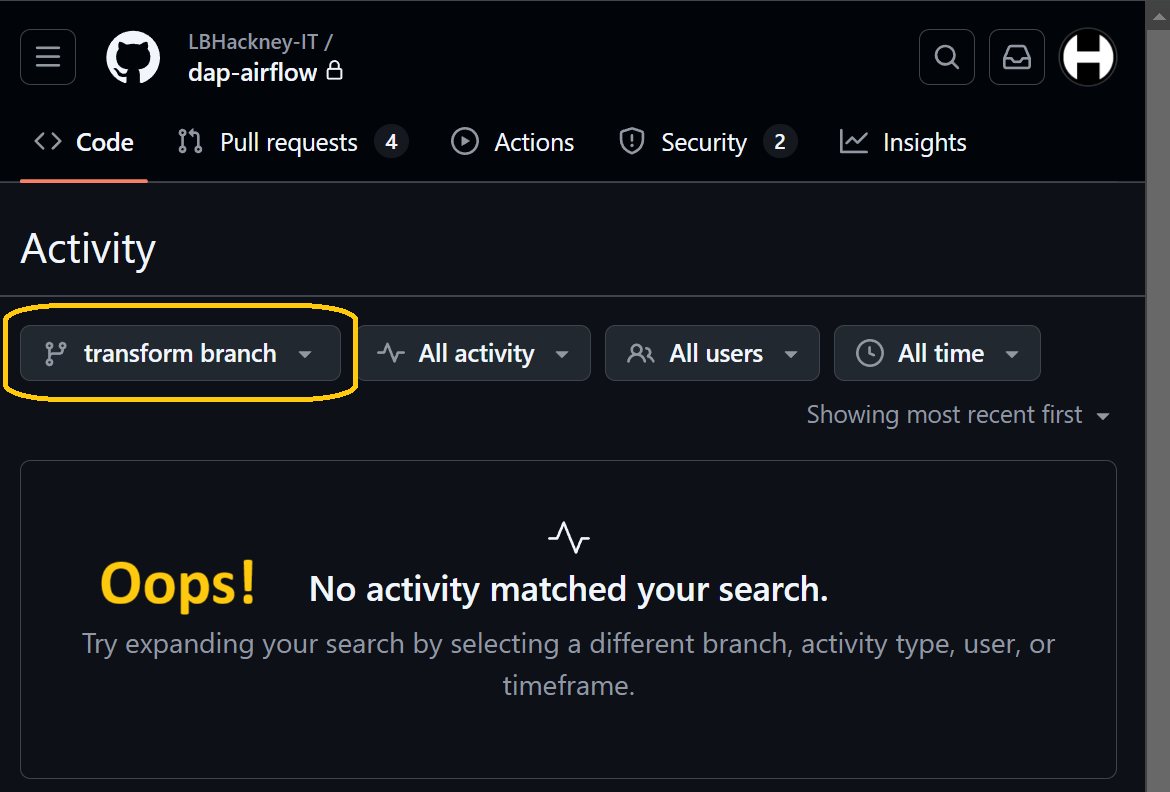
👁 If, below that, you get the message "No activity matched your search" then you can be certain you never actually committed a [transform].sql file.
👉 If you did not commit your [transform SQL] to your [transform branch] then check back here ►DAP⇨flow📚Committing transforms
👁 Otherwise, you should see a list of one-or-more commits to your [transform branch].
🖱 But if you are not sure about those, then you can click on … after each commit message and select "Compare changes"
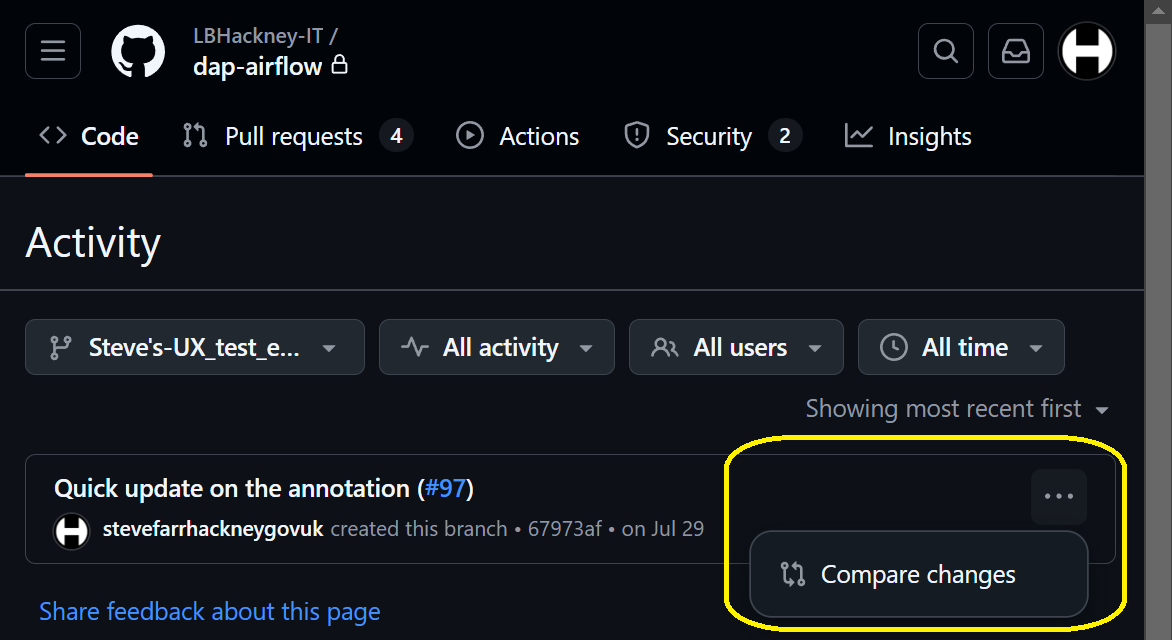
👁 Then, on the next screen you will be presented with a list of changes that should remind you what you actually did!
👉 If you are not sure you have properly committed your [transform SQL] to your [transform branch] then you should retrace your steps here ►DAP⇨flow📚Committing transforms